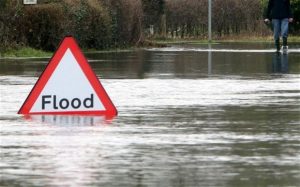Tackling the challenge of U.S flood risk will require re/insurers to focus on educating property owners while at the same time developing more detailed resources, such as flood maps and risk models, according to Swiss Re Senior Treaty Underwriter Matt Junge.
 Although floods cause around $15 billion of economic damage every year in the U.S, only 15% of homeowners have a flood insurance policy, and only $5 billion of annual damages are insured.
Although floods cause around $15 billion of economic damage every year in the U.S, only 15% of homeowners have a flood insurance policy, and only $5 billion of annual damages are insured.
2017’s hurricane season highlighted the difficulties that U.S catastrophe re/insurers still face, as more than two thirds of flood damages went uninsured last year, while 80% of residents in Houston, which was hit with severe flooding following Hurricane Harvey, did not possess adequate flood coverage.
Junge explained that closing the flood protection gap starts with education, as many property owners “don’t understand their risk of flooding or incorrectly believe they have coverage through their traditional insurance policy when they may not.”
He pointed out that the U.S National Flood Insurance Program (NFIP) estimates that 1 in every 5 flood insurance claims comes from a property outside a high hazard flood zone, and that urban flooding during intense rainfall events regularly occurs outside of flood zones.
“The insurance industry needs to help property owners better understand their risk of flooding is not defined by lines drawn on a map and called a high hazard flood zone,” said Junge. “After education comes the creation of a product that provides valuable coverage for a property owner.”
However, Junge also suggested that the re/insurance industry needs to better leverage recent developments in high resolution flood maps, probabilistic models, and understanding of flooding dynamics.
“Flood is a high resolution peril,” said Junge. “If you compare it to other perils, such as hurricane or earthquake, flooding requires much more detailed maps because one meter of elevation difference can mean the difference between a home being dry or wet.
“High resolutions maps based on satellite or LIDAR are able to reflect the topography in a much more detailed way than ever before. Combine these maps with the ability to simulate hundreds of thousands of realistic flooding events helps the industry to understand the types of events that can happen and how damaging they may be to a single risk or a portfolio of business.”
Swiss Re currently partners with personal and commercial lines insurers to help them develop private flood products, utilising its reinsurance capacity, global flood model, and dedicated flood peril team.
“Our team spends a significant amount of time educating primary insurers about why flood insurance can be underwritten profitably and what technological changes have occurred over the last decade to make this possible,” said Junge.
He also noted that capital markets can potentially help inform re/insurers by providing a benchmark against which companies can set their own prices for the risk of flood.
Additionally, parametric triggers are proving to be a valuable solution for municipalities or other government organisations that incur significant expenses in flood protection or recovery.
Junge stated: “As these instruments pay quickly they allow for the public sector to quickly fund these relief and reconstruction efforts as a complement to more traditional loss-adjustment based indemnity insurance.”


